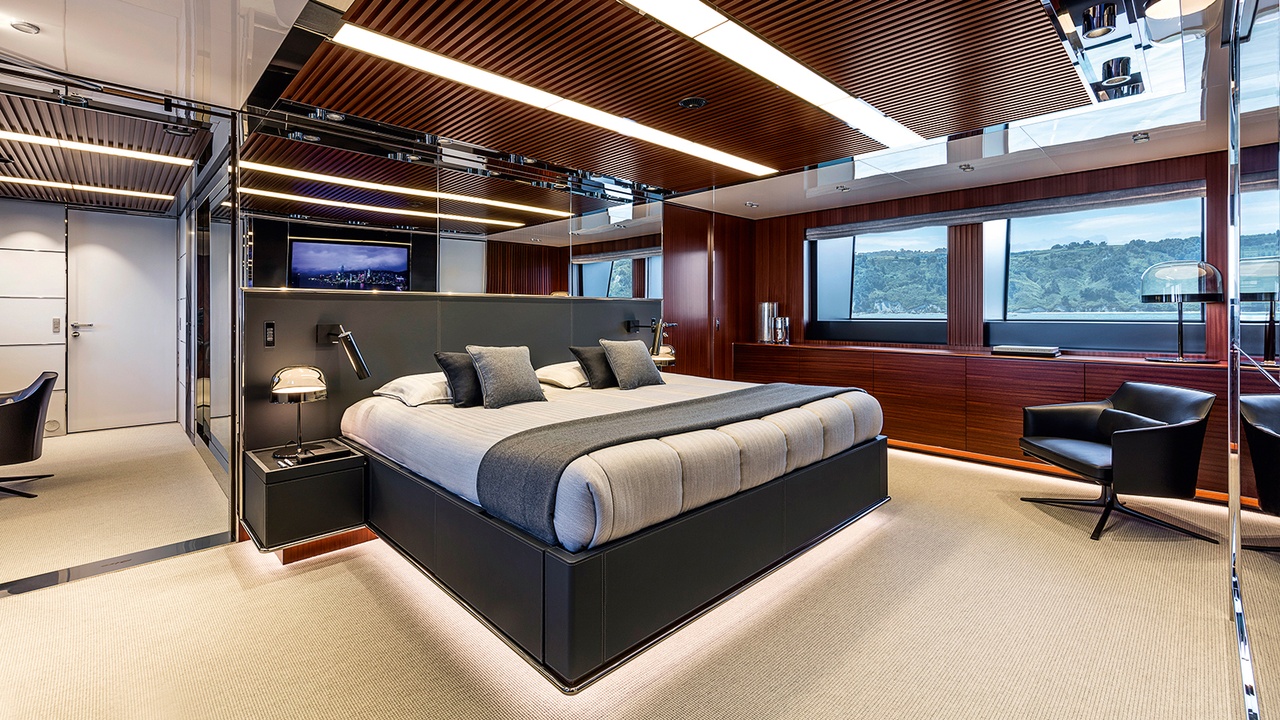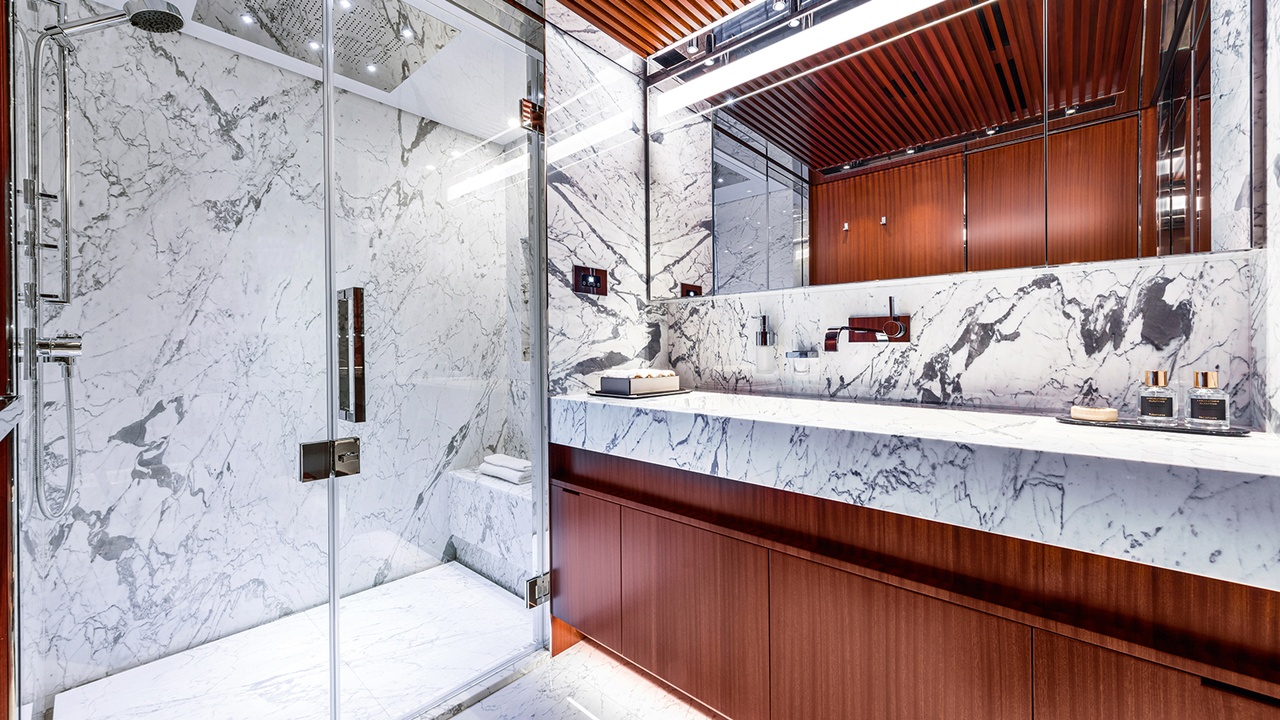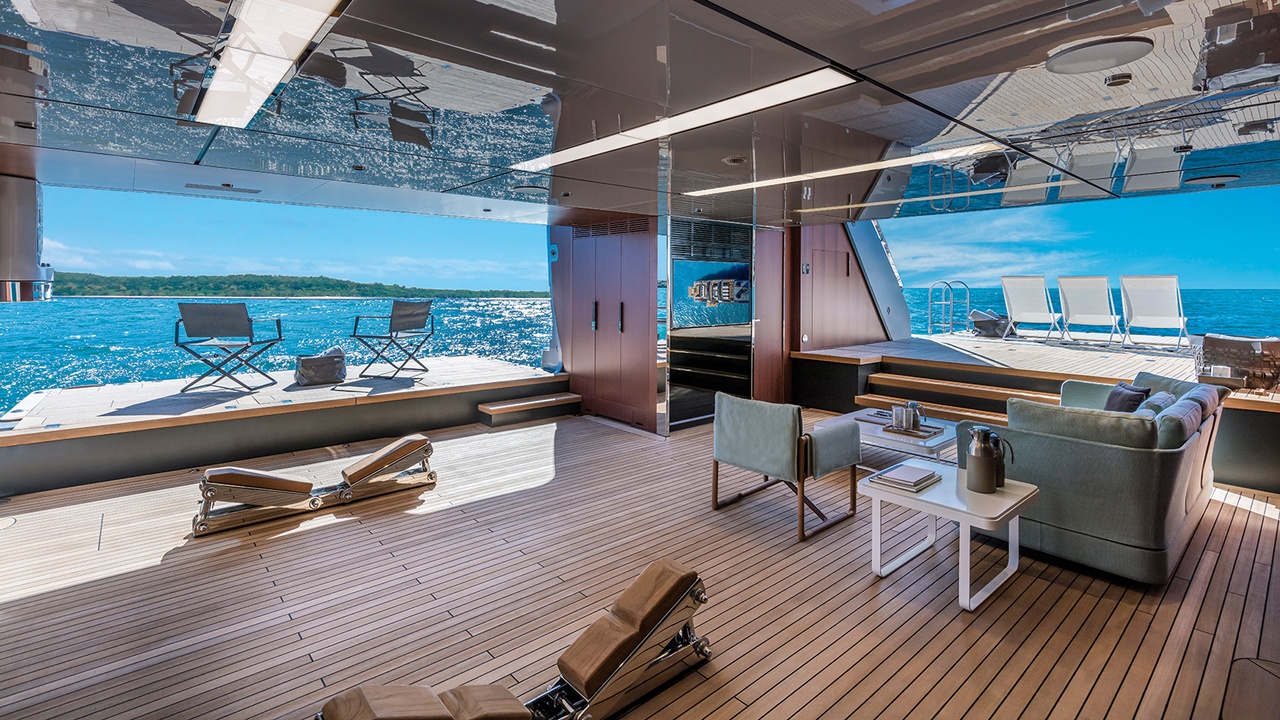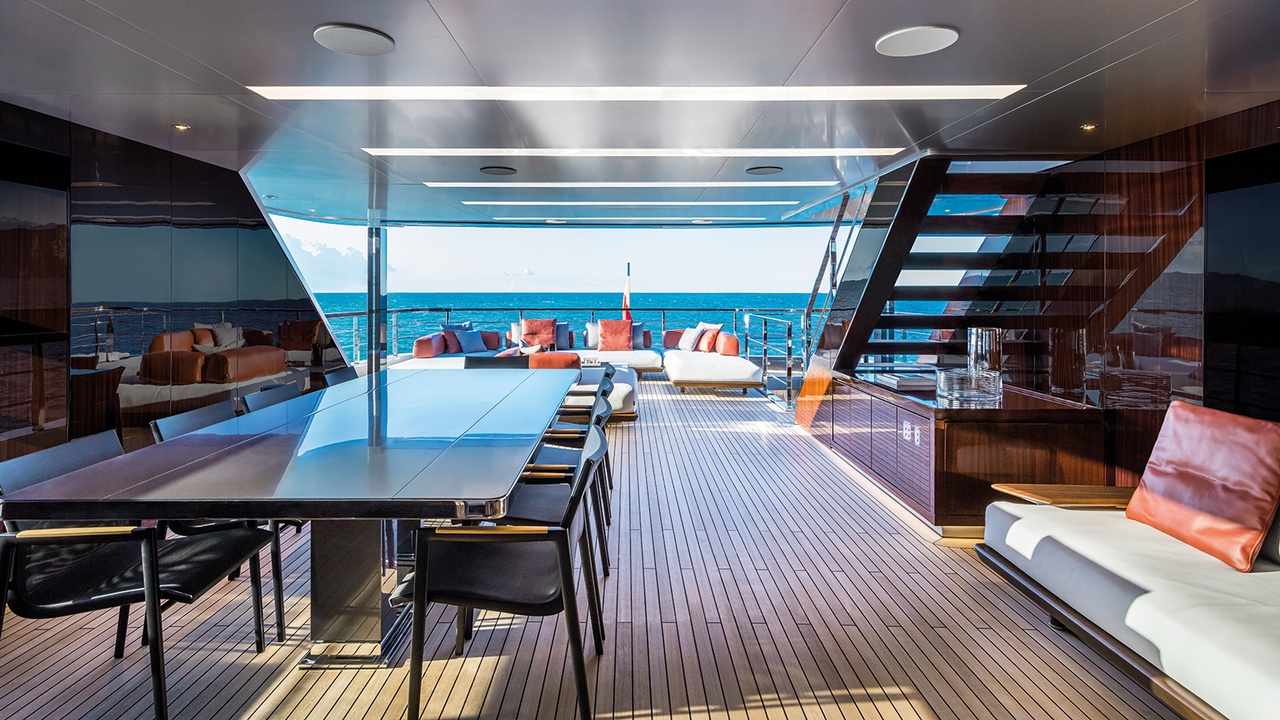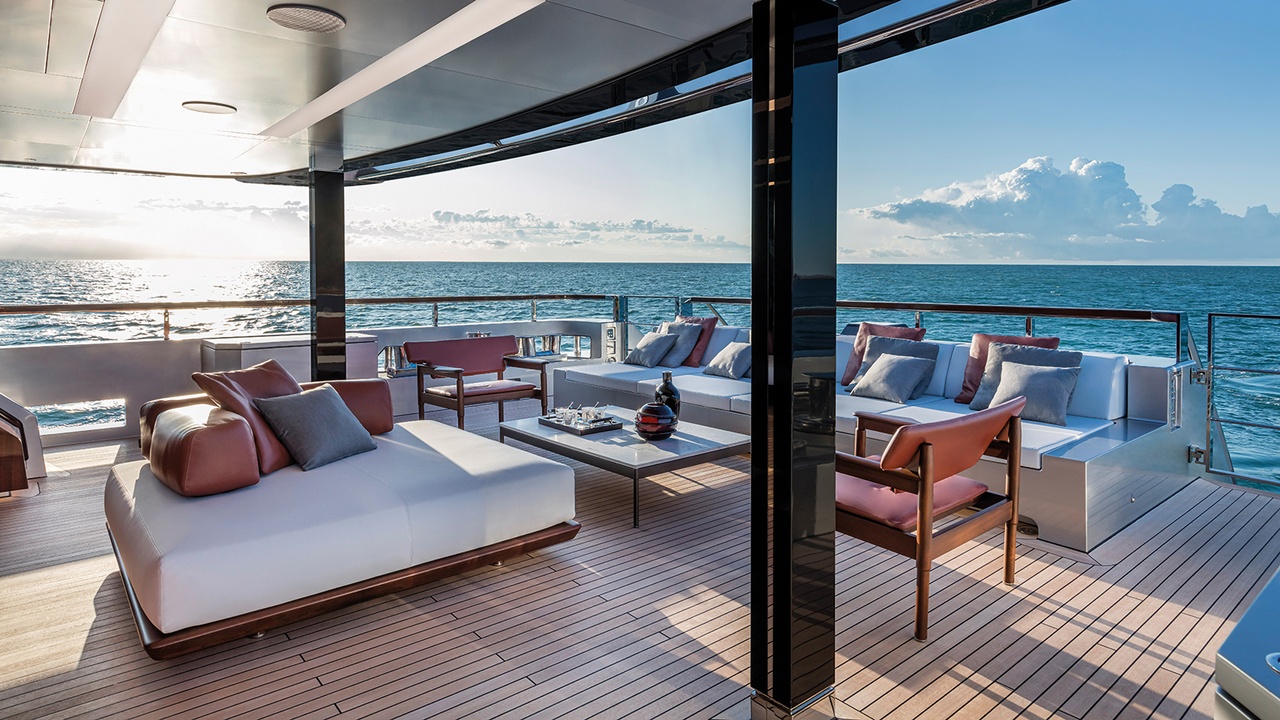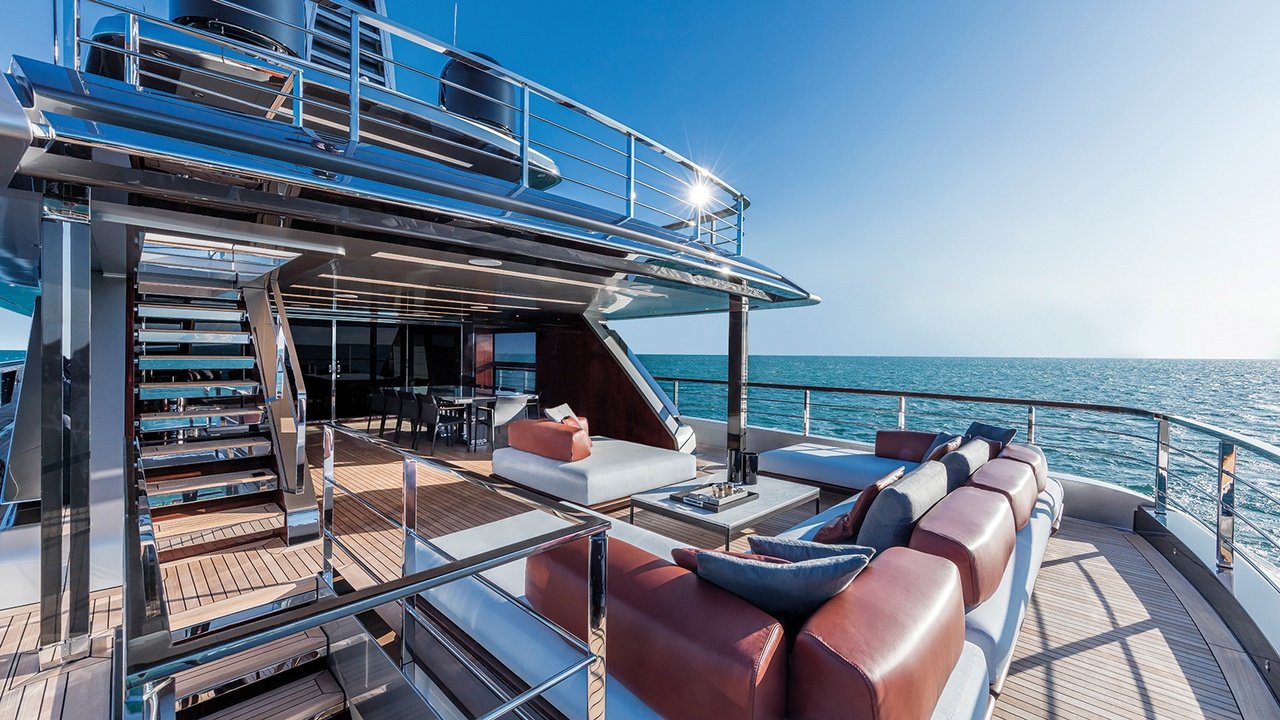When the Riva 50 Metri made her public debut at the Monaco Yacht Show in 2019, the name emblazoned on her transom – Race – gave a hint as to who her owner was. And in case there was any doubt, the treasure trove of Ferrari memorabilia on board and a very unusual automotive-inspired bridge made it crystal clear.
At 49.9 metres, Race is the largest-ever Riva yacht, proudly previewed in June 2019 at Venice’s Arsenal, during an exclusive client event. She’s also the first to emerge from the Riva Superyachts Division, which was established in 2014 at the Ferretti Group Superyacht Yard in Ancona, where its CRN, Custom Line and Pershing superyachts are built. The name Riva most vividly evokes the sexy runabouts that made the brand famous in the 1960s and 70s. But Carlo Riva always envisioned a place for larger Riva boats, as seen in his collaboration with De Vries (Feadship) and later CRN on the 24-metre Riva Caravelle series, and his personal yacht, 30.5-metre Vespucci, which was delivered in 1978 and relaunched in 2018 after a thorough refit.


Two exterior styles, each drawing inspiration from classic Rivas, are offered on the same technical platforms in the Riva Superyachts series, in 50-, 60-, 70- and 95-metre sizes. This first design is inspired by the 1964 Riva Caravelle series. The second option is sportier, with rounded lines and a more aggressive profile, taken from the Riva coupé yachts and seen on the current Riva 76 Perseo and 88 Domino Super.
The Riva 50 Metri’s exterior and interior were created by Officina Italiana Design in concert with Riva’s in-house team. “Race takes inspiration from the Caravelle, which was a true masterpiece conceived by Carlo Riva,” says Sergio Beretta, CEO of Officina Italiana Design, which he founded with chief designer Mauro Micheli. “The challenge was to innovate without forgetting the DNA of the Riva brand.”
In essence, Race is a highly modernised take on the classic Caravelle. Both yachts feature parallelogram windows, as well as forward-sloping lines that give the impression of movement. During the Monaco show, Race had an enviable position at the very end of Jetée Lucciana, so you could admire her silver hull and clean and simple lines. “Race has a great personality,” says Micheli. “She has three straight lines that define each level. The design is clean, and we stayed away from overworked, elaborate or redundant lines and shapes, both in the exterior and the interior.”
This veneer is found on all exterior panels, ceilings and the built-in exterior furniture. “By decreasing the weight, you have much better results in terms of fuel consumption,” says de Vivo. “At 14 knots, Race burns 300 litres per hour with the engines and generators on. It’s a very good result for us.” Powered by twin 1,360hp MTU 8V 4000 M63 diesel engines, this full-displacement yacht in aluminium alloy reaches a top speed of 15 knots and has a cruising range of 3,500 nautical miles at 11 knots.
It was also vital that the first Riva 50 have the essence of an iconic Riva. This translated to an obsession with the material selection and a bevy of little details – even the stainless-steel drains on the deck are emblazoned with the Riva logo written in miniature. Custom doorknobs, similar to those seen on the Riva Dolcevita, were moulded to fit the owner’s hand perfectly.

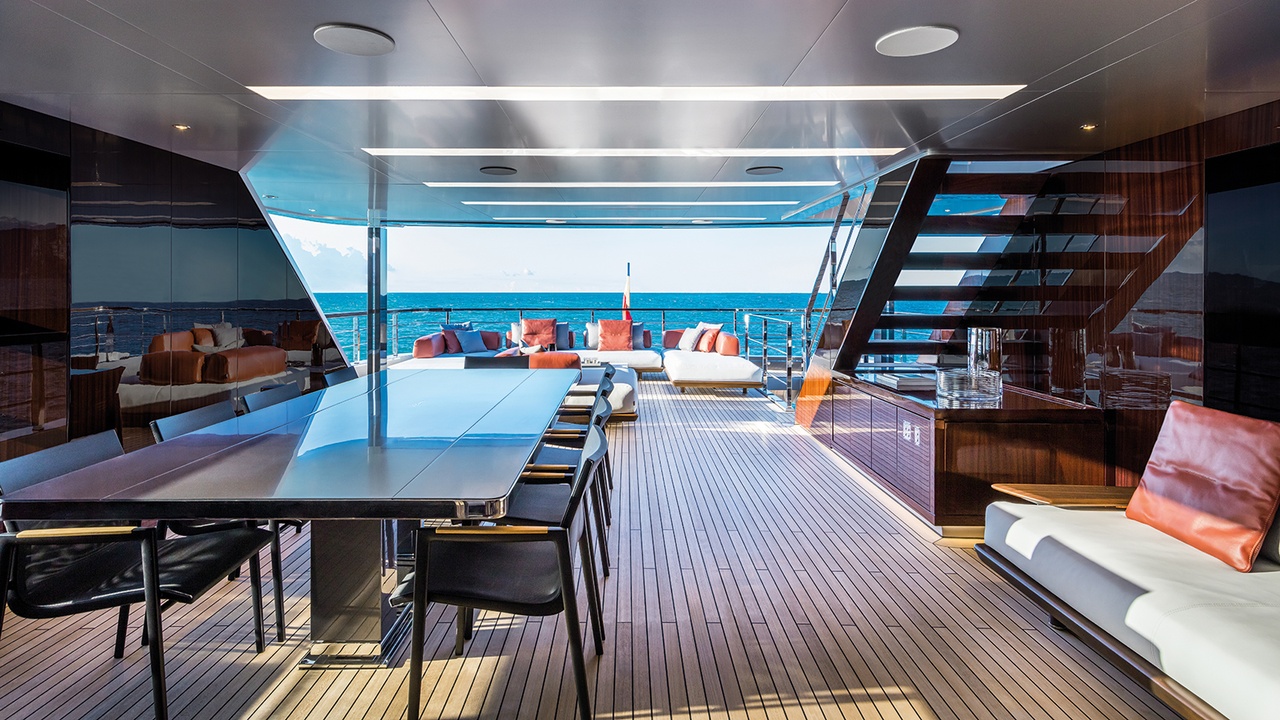
One of the first things that de Vivo points out is the use of lightweight materials derived from the aviation industry: a sandwiched panel made of fibreglass and Nomex – the latter is also used in Formula One cars. A veneer goes over the top to give the look of wood, but it’s much lighter.
The interior of Race is modern, masculine and distinctively Riva. There isn’t a dizzying array of materials; instead the design team concentrated on a uniform colour palette of grey and white, accentuated by mahogany, stainless steel, white statuario marble with grey veining and an abundance of glass, like the glass-framed main stairwell. Narrow strips of mahogany on the ceilings in the saloons and cabins add dimension and hide the air-conditioning output, as the air filters out between the wooden slats. These slats are carried throughout the boat, from the main saloon to the hallways and the guest cabins.
A seven-metre tender is held below in the garage, which has a shell door for launching. When it is launched, the space is transformed into a beach club with loose furnishings. There is enough space for the area to be used as a gym even when under way with the tender inside.
The second Riva 50 Metri is currently in build at the Ferretti Group Superyacht Yard in Ancona, with delivery slated for early 2021, before the summer season. According to Ferretti Group CEO Alberto Galassi, seeing the Riva Superyachts Division come to life was a dream of Carlo Riva.


















